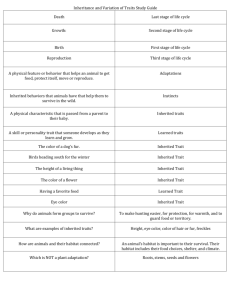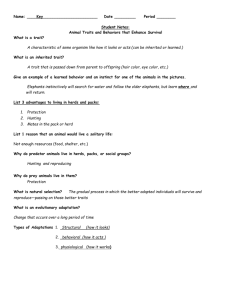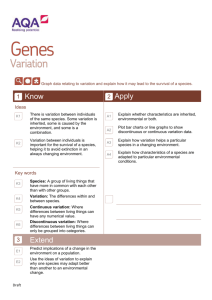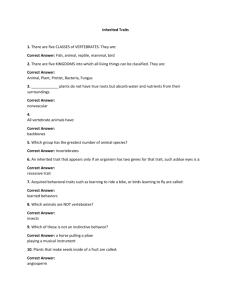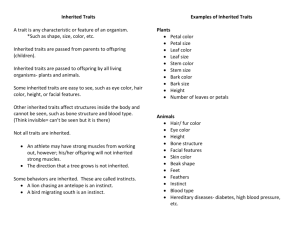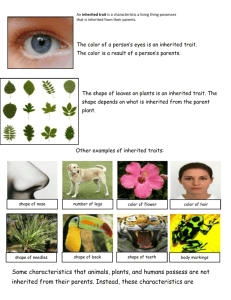Life Science Adaptations Test Review
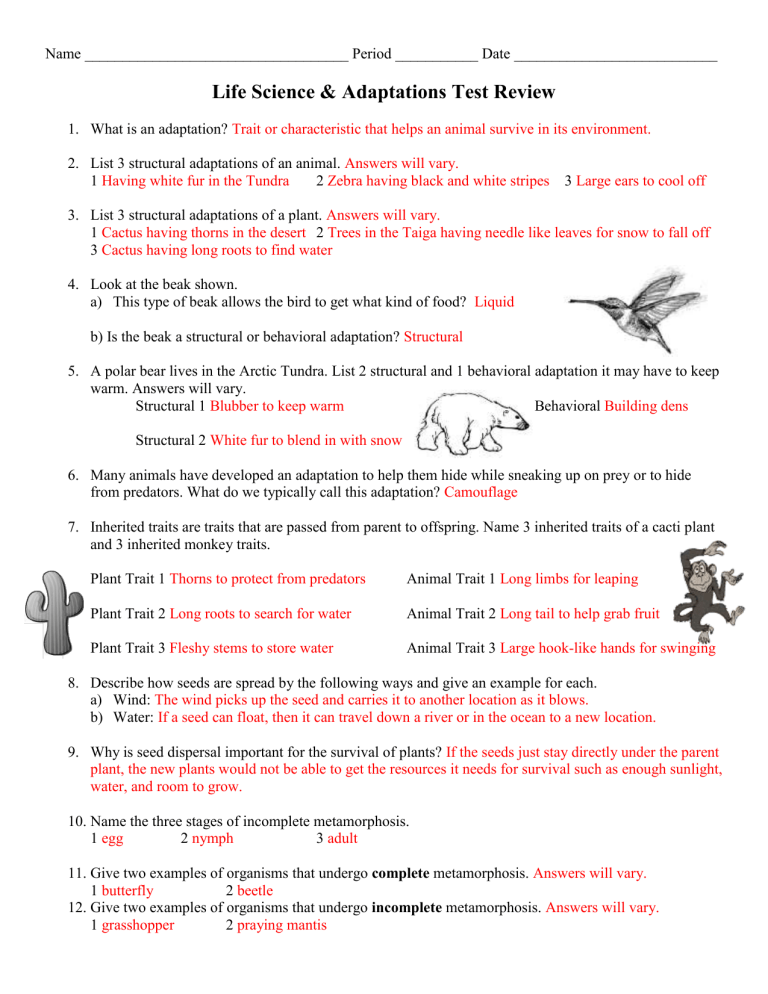
Name ___________________________________ Period ___________ Date ___________________________
Life Science & Adaptations Test Review
1.
What is an adaptation? Trait or characteristic that helps an animal survive in its environment.
2.
List 3 structural adaptations of an animal. Answers will vary.
1 Having white fur in the Tundra 2 Zebra having black and white stripes 3 Large ears to cool off
3.
List 3 structural adaptations of a plant. Answers will vary.
1 Cactus having thorns in the desert 2 Trees in the Taiga having needle like leaves for snow to fall off
3 Cactus having long roots to find water
4.
Look at the beak shown. a) This type of beak allows the bird to get what kind of food? Liquid b) Is the beak a structural or behavioral adaptation? Structural
5.
A polar bear lives in the Arctic Tundra. List 2 structural and 1 behavioral adaptation it may have to keep warm. Answers will vary.
Structural 1 Blubber to keep warm Behavioral burrows
Building dens
Structural 2 White fur to blend in with snow
6.
Many animals have developed an adaptation to help them hide while sneaking up on prey or to hide from predators. What do we typically call this adaptation? Camouflage
7.
Inherited traits are traits that are passed from parent to offspring. Name 3 inherited traits of a cacti plant and 3 inherited monkey traits.
Plant Trait 1 Thorns to protect from predators
Plant Trait 2 Long roots to search for water
Animal Trait 1
Animal Trait 2
Long limbs for leaping
Long tail to help grab fruit
Plant Trait 3 Fleshy stems to store water Animal Trait 3 Large hook-like hands for swinging
8.
Describe how seeds are spread by the following ways and give an example for each. a) Wind: The wind picks up the seed and carries it to another location as it blows.
b) Water: If a seed can float, then it can travel down a river or in the ocean to a new location.
9.
Why is seed dispersal important for the survival of plants? If the seeds just stay directly under the parent plant, the new plants would not be able to get the resources it needs for survival such as enough sunlight, water, and room to grow.
10.
Name the three stages of incomplete metamorphosis.
1 egg 2 nymph 3 adult
11.
Give two examples of organisms that undergo complete metamorphosis. Answers will vary.
1 butterfly 2 beetle
12.
Give two examples of organisms that undergo incomplete metamorphosis.
Answers will vary.
1 grasshopper 2 praying mantis
Name ___________________________________ Period ___________ Date ___________________________
13.
What two stages do incomplete and complete metamorphosis have in common?
1 egg 2 adult
14.
Label inherited or learned next to each statement. a) Inherited A dog’s sense of smell b) Inherited Zebra’s stripes c) Learned Ability to speak English d) Inherited Shape of your nose e) Learned Being able to ice skate
15.
Define instinct. How is it different than inherited or learned behaviors?
(Instinct) Some animals are born with natural behaviors they need in order to survive, such as a baby crying.
(Inherited) Animals are also born with physical traits that help them survive in their environments, such as horns or large ears.
(Learned) Animals also learn behaviors from others they observe, such as birds learning how to fly.
16.
Label learned or instinct next to each statement. a) Instinct Beaver building a dam b) Learned Reading a book c) Learned Bird flying d) Learned Walking e) Instinct Newborn baby crying f) Instinct Spider spinning a web g) Instinct Bird building a nest
17.
A giraffe has a long neck. What do you think the purpose is of the long neck? The long neck helps the giraffe reach fruit and leaves at the top of trees.
18.
A lion has sharp teeth and a cow has flat teeth. What is the purpose or function of each? a) Sharp teeth to tear apart meat b) Flat teeth to tear apart plants or grass

